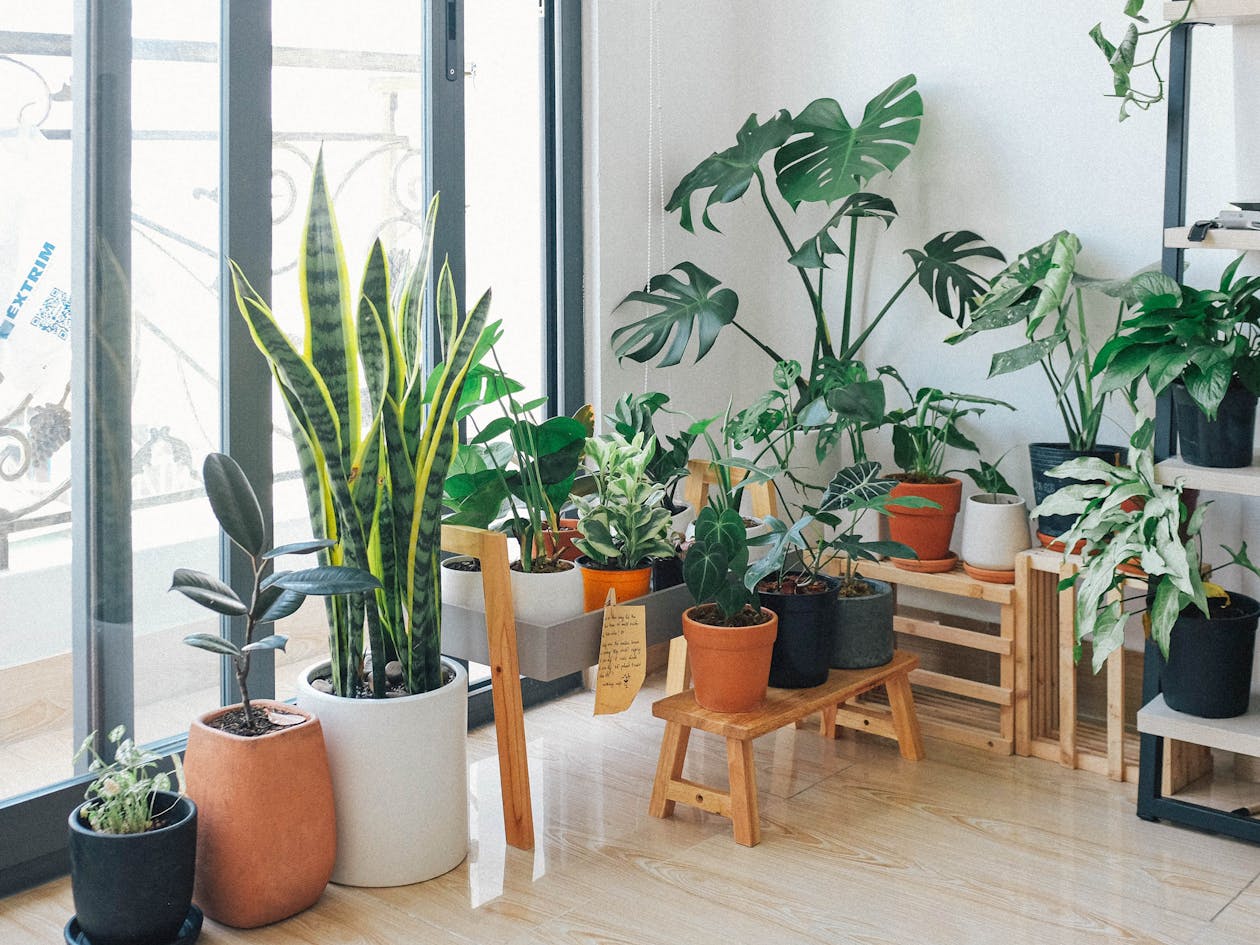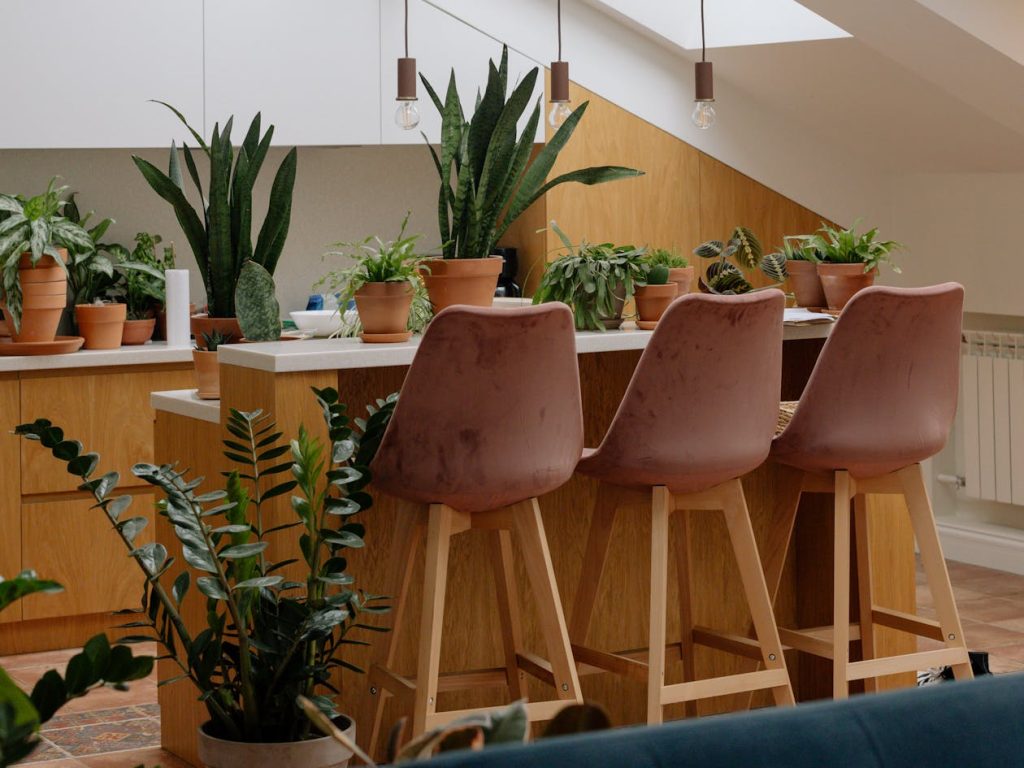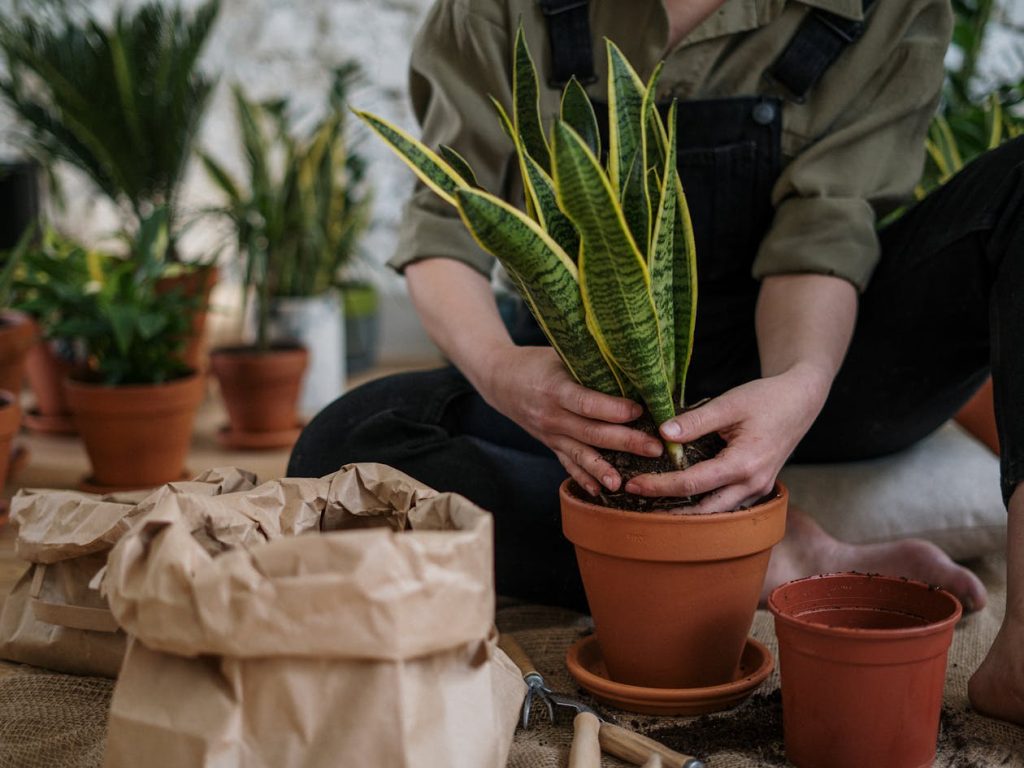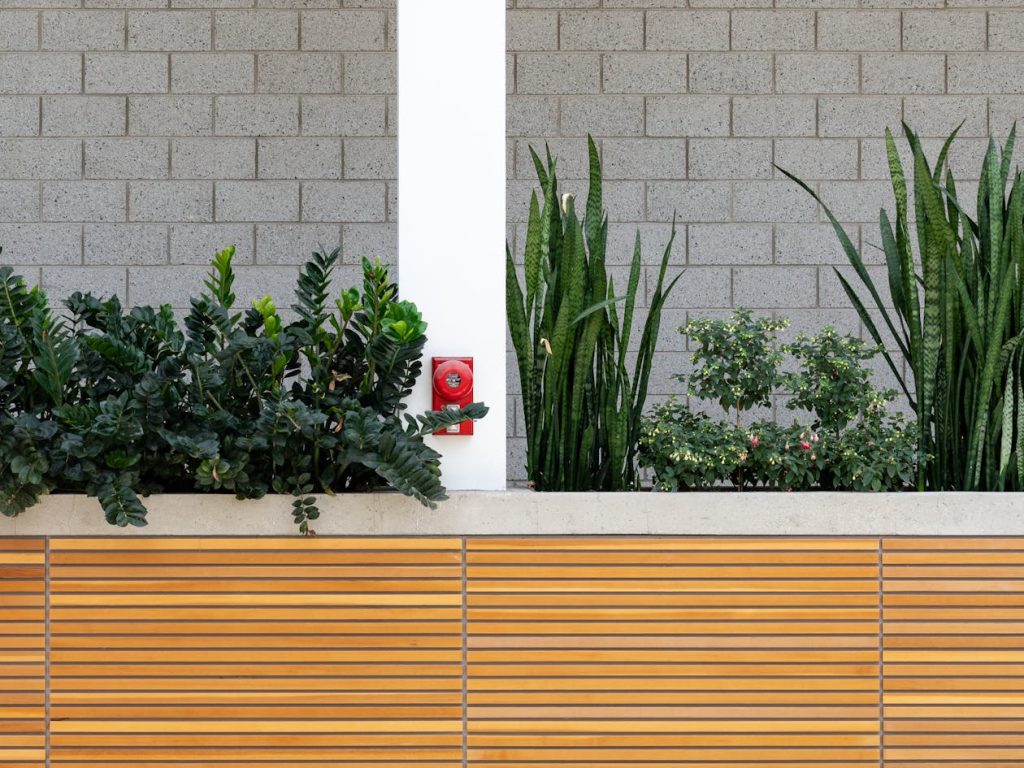Your cart is currently empty!
Ever Wondered Why So Many People Keep Snake Plants in Their Bedroom? The Reason Why is GENIUS

Walking through homes across America reveals an intriguing trend: snake plants appearing in bedrooms with increasing frequency. Social media feeds showcase these distinctive sword-shaped plants positioned next to beds, on nightstands, and in bedroom corners. Interior designers recommend them specifically for sleeping spaces, while plant enthusiasts insist bedrooms represent their ideal location.
What makes this particular plant so special for bedrooms remains mysterious to most people. Unlike typical houseplants chosen purely for decoration, snake plants serve a specific nighttime purpose that most plant owners discover only after experiencing the benefits firsthand. Sleep quality improvements, easier breathing, and morning freshness become noticeable within weeks of bedroom placement.
Scientists and plant experts have identified remarkable characteristics that make snake plants bedroom superstars. While other houseplants might look beautiful in sleeping spaces, none match the specific biological processes that make snake plants perfect nighttime companions. Understanding why reveals a genius approach to creating healthier sleep environments naturally.
Meet Nature’s Air Conditioner That Never Stops Working

Snake plants, scientifically known as Dracaena trifasciata (formerly Sansevieria trifasciata), originated in Asia and Africa, where they thrived in harsh, dry conditions. Evolution equipped these plants with survival mechanisms that translate perfectly to indoor bedroom environments.
Recognition comes easily through their distinctive appearance: thick, upright, sword-shaped leaves that grow vertically from the soil level. Evergreen foliage maintains consistent color year-round, while sturdy structure requires no support systems or special positioning. Growth patterns range from compact 6-inch varieties perfect for nightstands to dramatic specimens reaching several feet tall.
Common names include mother-in-law’s tongue, though snake plant has become the preferred designation among modern plant enthusiasts. Visual appeal combines with practical benefits, explaining their popularity in bedroom decor schemes across different design styles.
Most Plants Stop Working When You Need Them Most
Standard houseplants follow predictable daily cycles that work against bedroom air quality during sleeping hours. Daytime photosynthesis produces oxygen while plants absorb carbon dioxide, creating fresh, clean air throughout living spaces. However, darkness triggers reverse processes in most plants.
Nightfall causes typical houseplants to switch from oxygen production to oxygen consumption. Plants begin absorbing oxygen from the surrounding air while releasing carbon dioxide, exactly opposite of their beneficial daytime behavior. Bedrooms filled with conventional plants actually experience declining air quality during sleep hours when people spend 6-8 hours breathing in enclosed spaces.
Carbon dioxide buildup becomes problematic in sealed bedrooms where people sleep with closed windows and doors. Poor ventilation combined with plant respiration creates stale, oxygen-depleted air that affects sleep quality, morning alertness, and overall well-being.
Eight hours of breathing in progressively degrading air quality explains why many people wake feeling tired despite adequate sleep duration. Air circulation issues in bedrooms create conditions where standard houseplants contribute to problems rather than solutions.
Snake Plants Break Every Plant Rule at Night

Here lies the genius discovery that sets snake plants apart from every other houseplant: instead of producing oxygen at night, they continue absorbing carbon dioxide in darkness through CAM (Crassulacean Acid Metabolism). Unlike typical plant behavior, snake plants open their stomata at night to take in CO₂, storing it for photosynthesis during the day.
CAM photosynthesis allows snake plants to perform this nighttime adaptation. While most plants open stomata during the day and close them at night, snake plants reverse this pattern. This means they can keep improving air balance by taking in CO₂ at night, but oxygen release still happens mainly in daylight.
Botanist Halina Shamshur explains the plant’s resilience: “Being very undemanding, they’re often grown on windowsills in houses, apartments, and different public buildings.” Snake plants can tolerate both shade and direct sunlight, underwatering, drafts, and dry air.
Bedroom air circulation regulation becomes automatic with snake plants working throughout the night hours. Fresh oxygen production continues during sleep, creating healthier breathing environments that support deeper rest and morning alertness. Air quality actually improves during nighttime hours instead of degrading like rooms with conventional plants.
Toxic Air Pollutants Meet Their Match
Beyond oxygen production, snake plants actively remove dangerous chemicals from bedroom air. Indoor environments contain surprising amounts of toxic pollutants released from furniture, carpeting, paint, cleaning products, and electronic devices.
Cancer-causing chemicals that snake plants absorb include benzene from petroleum products, formaldehyde from adhesives and fabrics, and xylene from printing inks and rubber. Trichloroethylene from cleaning agents and toluene from paint thinners also get filtered from bedroom air. Snake plants work continuously to remove these invisible threats that accumulate in indoor air.
Small contributions from individual plants combine to create significant air purification effects. Multiple snake plants in bedroom settings can substantially reduce toxic pollutant concentrations, creating cleaner breathing environments during sleep hours.
Allergy Sufferers Discover Unexpected Relief

People with respiratory sensitivities often notice dramatic improvement after introducing snake plants to bedroom spaces. Dust and pet dander reduction occurs through natural air filtration processes that capture airborne particles.
Oxygen release accompanied by moisture addition helps combat dry indoor air that irritates the respiratory system. Proper humidity levels support comfortable breathing while reducing allergy symptoms that worsen in dry conditions.
Airborne allergen impact decreases when snake plants actively filter air during sleep hours. Poor indoor air quality links directly to increased asthma attacks and allergy symptoms, making air purification especially valuable for sensitive individuals.
Natural defense systems work continuously without electricity, filters, or maintenance costs. Snake plants provide 24-hour air cleaning that particularly benefits bedrooms where people spend extended periods breathing recycled air.
Mental Health Gets Unexpected Bedroom Boost
Scientific research supports connections between indoor plants and improved mental wellness. Plant presence in living spaces correlates with reduced stress levels, improved mood, and better overall psychological health.
Horticultural therapy applications in medical settings demonstrate the therapeutic effects of plant interaction. Hospitals, schools, and workplaces implement plant programs as low-cost, low-risk environmental improvements with measurable benefits.
Bedroom plants specifically support mental health through multiple pathways. Better air quality during sleep improves rest quality, leading to better mood regulation and stress management. Green visual elements provide calming influences that reduce anxiety and promote relaxation.
According to the Chinese, love for snake plant is loved for its ability to absorb negative energy. According to feng shui, placing Sansevieria in a classroom facilitates learning. Snake plants are believed to absorb negative energies and eliminate bitterness and jealousy.
Easy Care Victory for Busy Plant Parents

Snake plant care requirements suit even the most neglectful plant owners. Extreme low-maintenance needs accommodate busy schedules, frequent travel, and limited plant care experience.
Drought tolerance allows plants to survive weeks without watering. Overwatering causes more problems than underwatering, making snake plants perfect for people who forget regular plant care routines.
Light requirements remain flexible, accepting everything from bright indirect light to low-light corners. Bedroom placement works regardless of window positioning or natural light availability throughout different seasons.
Temperature tolerance spans normal household ranges without special heating or cooling requirements. Humidity preferences match typical indoor conditions without additional moisture supplementation needs.
Seven Different Snake Plant Varieties for Every Bedroom
Bird’s nest snake plants stay compact at 6 inches tall, perfect for nightstands and small spaces. Cup-shaped leaf clusters create interesting visual textures without overwhelming modest bedroom layouts.
Cylinder snake plants produce round leaves extending several feet in length. Crown-like growth patterns create dramatic focal points suitable for larger bedrooms with high ceilings.
Laurentii varieties feature green centers with bright yellow margins. Color contrast adds visual interest while maintaining classic snake plant benefits for air purification and nighttime oxygen production.
Twisted sister cultivars remain dwarf-sized, around 15 inches, with variegated gold and green twisted leaves. Rare availability makes these conversation pieces for plant collectors who want bedroom statement plants.
White snake plants display dark green leaves with white vertical stripes. Striking appearance provides bold contrast in bedroom color schemes while delivering identical health benefits.
Bedroom Safety Considerations

Snake plants contain mild toxins that cause mouth swelling and numbness if consumed in large quantities. Pet owners and parents should position plants away from curious children and animals prone to chewing houseplants.
Saponin compounds in leaves provide natural protection against pests but require caution during handling. External applications for wound healing show traditional uses, though medical consultation remains advisable for therapeutic applications.
Proper placement prevents accidental contact while maximizing air purification benefits. Elevated positioning on stands or shelves keeps plants accessible for occasional care while maintaining safety around household members.
Simple Care Instructions for Bedroom
Watering represents the most common care mistake with snake plants. Soil should dry completely between waterings, typically requiring water only every 2-3 weeks during growing seasons.
Well-drained pots prevent root rot, which kills more snake plants than any other factor. Drainage holes allow excess water to escape, preventing soggy soil conditions that damage root systems.
Indirect sunlight works best, though snake plants adapt to various light conditions. Bedroom windows provide adequate light without requiring direct sun exposure that might scorch leaves.
Repotting becomes necessary only when plants outgrow containers, typically every 3-5 years. Root-bound plants actually prefer slightly cramped conditions that encourage upright growth patterns.
Bedroom Air Quality Transformation

NASA research identified snake plants among the top air-purifying houseplants for indoor environments. Continuous oxygen production during nighttime hours provides measurable improvements in bedroom air quality.
Carbon dioxide to oxygen conversion rates remain steady throughout dark hours when most plants cease beneficial processes. Air circulation improvements become noticeable within days of bedroom placement.
Respiratory health benefits during sleep include easier breathing, reduced nighttime congestion, and improved morning alertness. Clean air supports deeper sleep phases that restore physical and mental energy.
Multiple snake plants amplify benefits without overcrowding bedroom spaces. Strategic placement near beds, in corners, and on surfaces creates comprehensive air purification systems that work silently throughout night hours.
Snake plants deliver genius bedroom solutions through nighttime oxygen production that transforms sleep environments naturally. Easy care requirements, air purification capabilities, and aesthetic appeal combine to create ideal bedroom companions that work while you rest, ensuring fresher air and better sleep quality every night.
